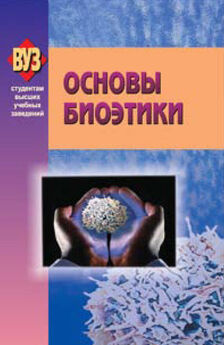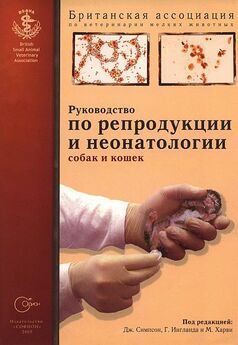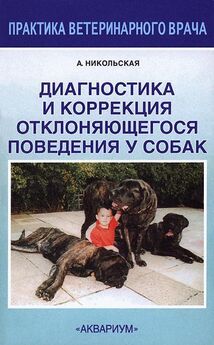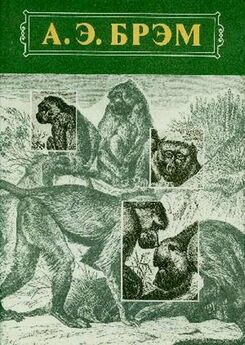Роберт Бертон - Чувства животных

- Название:Чувства животных
- Автор:
- Жанр:
- Издательство:Мир
- Год:1972
- ISBN:нет данных
- Рейтинг:
- Избранное:Добавить в избранное
-
Ваша оценка:
Роберт Бертон - Чувства животных краткое содержание
Живо написанный и очень хорошо иллюстрированный очерк о работе органов чувств животных в связи с их поведением. Автор умело сочетает высокий научный уровень с доступностью изложения. Незаметно, без напряжения он вводит читателя в курс сложнейших исследований, теорий и гипотез, в основе которых лежат современные методы изучения поведения животных.
Книга предназначена для широких кругов читателей-неспециалистов, для преподавателей и учащихся средней школы. Может оказаться полезной для студентов биологических факультетов, а также для инженеров, физиков, математиков, занимающихся проблемами бионики и нейрокибернетики.
Чувства животных - читать онлайн бесплатно полную версию (весь текст целиком)
Шрифт:
Интервал:
Закладка:
Amoore J. E., 1965. Psychophysics of odor, Cold Spring Harbour Symp. Quant. Biol., 30, 623–638.
Adler J., 1965. Chemotaxis in Escherichia coli, Cold Spring Harbour Symp. Quant. Biol., 30, 289–292.
Barrows W. M., 1915. The reactions of an orb-weaving spider Epeira sclopetaria Clerck, to rhythmic vibrations of its web, Biol. Bull., 29, 316–326.
Beament J. W. C. (ed.), 1962. Biological receptor mechanisms, Symposia of the Society for Experimental Biology, No. XVI, Cambridge.
Bell Q. H., Davidson J. N., Scarborough H, 1961. Textbook of Physiology and Biochemistry, Livingstone.
Вelton P., Kempster R. H., 1962. A field test on the use of sound to repel the European corn-borer, Entomologia experi-mentalis et applicata, 5, 281–288.
Benzinger Т. H., 1961. The human thermostat, Scientific American, 204, 134–147.
Bradshaw S. D., Main A. R., 1968. Behavioural attitudes and regulation of temperature in Amphibolurus lizards, J. Zool., 154, 193–222.
Brown F. A., 1962. Responses of the planarian, Dugesia, and the protozoan, Paramecium, to very weak horizontal magnetic fields, Biol. Bull., 123, 264–281.
Brown M. E. (ed.), 1957. The physiology of fishes, Vol 2 — Behaviour, Academic Press, New York.
Bullock Т. H., Diecke F. P. J., 1956. Properties of an infra-red receptor, J. Physiol., 134, 47–87.
Bullock T. H., Fox W., 1957. The anatomy of the infra-red sense-organ in the facial pit of pit-vipers, Quart. J. Micr. Sci., 98, 219–234.
Calhoun J. В., 1962. Population density and social pathology, Scientific American, 206, 139–148.
Сrips D. J., 1967. Barnacles, Science J., 3, 69–73.
Düecker Q., 1964. Colour vision in mammals, J. Bombay Nat. History Soc, 61, 572–586.
Dunning C. D., 1968. Warning sounds of moths, Z. für Tierpsychol., 25, 129–138.
Emlen J. Т., Penney R. L., 1964. Distance navigation in the Adelie penguin, Ibis, 106, 417–431.
Evans P. R., 1968. Reorientation of passerine night migrants after displacement by the wind, British Birds, Vol. 61, № 7, 281–303.
Ewer R. F., 1968. Ethology of Mammals, Logos.
Finkelstein D., Grüsser O.-J., 1965. Frog retina: detection of movement, Science, N. Y., 150, 1050–1051.
Flock A., 1965. Transducing mechanism in the lateral line canal organ receptors, Cold Spring Harbour Symp. Quant. Biol., 30, 133–145.
Von Frish K., 1951. Recent advances in the study of the orientation of the honey bee, The Bulletin of Animal Behaviour, № 9.
Gary N. E., 1962. Chemical mating attractants in the queen honey bee, Science, 136, 773–774.
Geste1and R. C, 1966. The mechanics of smell, Discovery, (February 1966), 29–34.
Griffin D. R., 1958. Listening in the Dark, Yale University Press.
Griffin D. R., Webster F. A., Michael C. R., 1960. The echolocation of flying insects by bats, Anim. behav, 8, 141–154.
Gould E., Nevus N. C, Novick A., 1964. Evidence for echo-location in shrews, J. Exp. Zool., 156, 19–38.
Hamburger V., 1926. Versuche über Komplementär-Farben bei Elbritzen (Phoxinus laevis), Z. vergleich. Physiol., 4, 286–304.
Hasкell R. Т., 1961. Insect Sounds, Witherby.
Hasler A. D., Larsen J. A., 1955. The homing salmon, Scientific American, 193, 72–76.
Henson O. W., 1965. The activity and function of the middle-ear muscles in echolocating bats, J. Physiol., 180, 871–887.
Horridge G. A., Boulton P. S., 1967. Prey detection by Chaetognatha via a vibration sense, Proc. Royal. Soc, Series B, 168, 413–419.
Ilse D., 1937. New observations on responses to colours by egg-lying butterflies, Nature, 140, 544.
Jenkins M. F., 1960. On the method by which Stenus and Dianous (Coleoptera: Staphylinidae) return to the banks of a pool, Trans. Roy. Entom. Soc, London, 112, 1.
Кa1mus H., 1955. The discrimination by the nose of the dog of individual human odours and in particular of the odours of twins, Brit. J. Anim. Behav., 3, 25–31.
Lees A, D., 1948. The sensory physiology of the sheep tick Ixodes ricinus, L., J. Exp. Biol., 25, 145–207.
Lettvin J. Y., Gesteland R. C., 1965. Speculation on smell, Cold Spring Harbour Symp. Quant. Biol., 30, 217–225.
Levick M. G., 1914. Antarctic Penguins: A study of their social habits, Heinemann.
Lissmann H. W., 1958. On the function and evolution of electric organs in fish, J. Exp. Biol)., 35, 156 — I91.
Lissmann H. W., Machin K. E., 1958. The mechanism of object location in Gymnarchus niloticus, J. Exp. Biol., 36, 451–486.
Machin К. E., Lissmann H. W., 1960. The mode of operation of the electric receptors in Gymnarchus niloticus, J. Exp. Biol., 37, 801–811.
Matthews G. V. Т., 1968. Bird Navigation, Cambridge.
Medway Lord, 1967. The function of echonavigation amongst swiftlets, Anim. Behav., 15, 416–420.
Mrosovsky N., 1967. How turtles find the sea, Science J., November, 53–57.
Mrosovsky N… Shettleworth S. J., 1968. Wavelength preferences and brightness cues in the water finding behaviour of sea turtles, Behaviour, 32, 211–257.
Muntg W. R. A., 1962. Microelectrode recordings from the diencephalon of the frog (Rana plpiens) and a blue-sensitive system, J. Neurophysiol., 25, 699–711.
Muntg W. R. A., 1962. Effectiveness of different colours of light in releasing the positive phototactic behaviour of frogs, and a possible function of the retinal projection to the diencephalon, J. Neurophysiol., 25, 712–720.
Murray R. W., 1962. The response of the ampullae of Lorenzini of elasmobranchs to electrical stimulation, J. Exp. Biol., 39, 119–128.
Norris K. S., Prescott J. H., Asa-Dorian P. V., Perkins P., 1961. An experimental demonstration of echolocation behaviour in the porpoise Tursiops truncatus (Montagu), Biol. Bull., 120, 163–176.
Palmer E., Weddell G., 1964. The relation between structure, innervation and function of the skin of the bottle nose dolphin (Tursiops truncatus), Proc. Zoo. Soc., 143, 553–568.
Pearcy W. G., Meyer S. L., Munk O., 1958. A «four-eyed» fish from the deep-sea: Bathylychnops exilis Cohen, 1958, Nature, 207, 1260–1261.
Pumphrey R. J., 1940. Hearing in insects, Biol. Rev., 15, 107–132.
Quilliam T. A., 1966. The mole's sensory apparatus, J. Zool., 149, 76–88.
Ransome R. D., 1968. The distribution of the greater horse-shoe bat, Rhinolophus ferrum-equinum, during hibernation, in relation to environmental factors, J. Zool., 154, 77–112.
Rоeder К. D., 1962. Behaviour of free flying moths in the presence of ultrasonic pulses, Anim. Behav., 10, 300–304.
Rоeder K. D., Treat A. E., 1957. Ultrasonic reception by the tympanic organ of noctuid moths, J. Exp. Zool., 134, 127–157.
Romanes G. J., 1885. Mental evolution in Animals, Keagan Paul.
Rushton W. A. H., 1965. Chemical basis of colour vision and colour blindness, Nature, 206, 1087–1091.
Tansleу К., 1965. Vision in Vertebrates, Chapman and Hall.
Treat A. E., 1956. The reaction time of noctuid moths to ultrasonic stimulation. J. New York Enfom. Soc., 64, 165–171.
Walcott C., 1963. The effect of the web on sensitivity in the spider, Achaeanaria tepidariorum (Koch), J. Exp. Biol., 40, 595–611.
Walсоtt C., van der Кloot W. G., 1959. The physiology of the spider vibration receptor, J. Exp. Zool., 141, 191–244.
Webster F. A., Griffin D. R., 1962. The role of the flight membranes in insect capture by bats, Anim. Behav., 10, 332–340.
Wenzel В. M., 1968. Olfactory prowess of the kiwi, Nature, 220, 1133–1134.
Wever E. G., Bray C. W., 1933. A new method for the study of hearing in insects, J. сотр. cell Physiol., 4, 79–93.
Wigglesworth V. В., 1953. The principles of Insect Physiology, Methuen.
Wigglesworth V. В., Gillet J. D., 1934. The function of the antennae of Rhodnius prolixus and the mechanism of orientation to the host, and Confirmatory experiments, J. Exp. Biol., 11, 120–139, 408–410.
Wilson E. O., 1963. Pheromones, Scientific American, 208, 100–114.
Wolken J. J., 1968. The photoreceptors of Arthropod eyes, Symp. zool. soc., Lond., 23, 113–133.
Wright R. H., 1964. The Science of Smell, George Allen and Unwin.
Примечания
1
Все фотографии помещены в конце книги. — Прим. ред.
2
Эти эксперименты, проведенные Густавом Крамером, более подробно описаны в книге Д. Гриффина «Перелеты птиц», изд-во «Мир», М., 1966, стр. 117–120. — Прим. перев.
3
Более точно — чувствительность органов обоняния. — Прим. перев.
4
В США термометр обычно помещают не под мышку, а в рот. — Прим. перев.
5
Автор здесь не совсем точен. Инкубационный период глазчатой курицы продолжается всего 60 дней, но самки откладывают яйца с большими перерывами в течение долгого времени, и самцу приходится заниматься гнездом действительно на протяжений 11 мес. — Прим. перев.
Шрифт:
Интервал:
Закладка:











